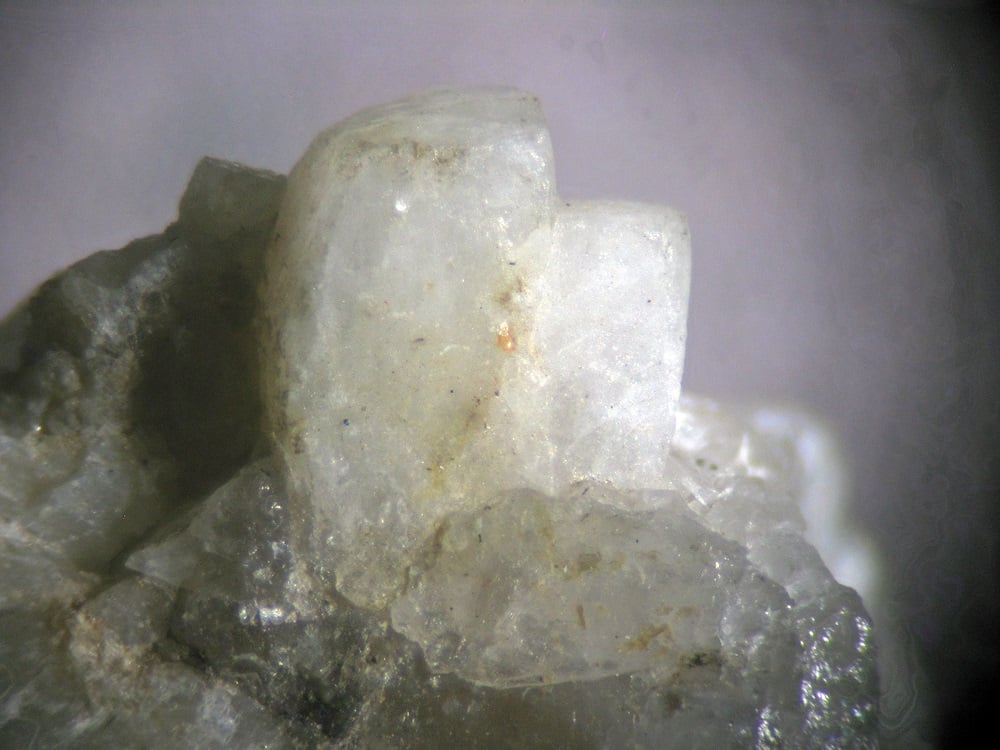Hurlbutite Value, Price, and Jewelry Information
Hurlbutite is an extremely rare mineral. Minute, colorless faceted stones have been cut from fragments.
1 Minute Read
Hurlbutite is an extremely rare mineral. Minute, colorless faceted stones have been cut from fragments.
Start an IGS Membership today
for full access to our price guide (updated monthly).Hurlbutite Value
Comments
To date, only hurlbutite from the type locality, Chandlers Mill, Newport, New Hampshire, has yielded clean, cuttable gem material. However, finding this seldom seen stone as a faceted gem would be quite unusual.
Strontiohurlbutite (SrBe2(PO4)2) is the strontium (Sr) analogue of the hurlbutite group. Hurlbutites are calcium (Ca) dominant. Both contain the rare element beryllium (Be).
Strontiohurlbutites have a light blue color, while hurlbutites range from white to greenish white.
Synthetics
In laboratories, scientists have created both hurlbutites and strontiohurlbutites for research purposes using a hydrothermal process. However, no jewelry use of these synthetics is known.
Enhancements
None known.
Sources
Gem-quality hurlbutites come from the Smith Mine, Chandlers Mill, Newport, New Hampshire.
Other sources include:
- United States: Maine, South Dakota.
- Czech Republic; Finland; Spain; Sweden; Zimbabwe.
Fujian Province, China produces strontiohurlbutite.
Stone Sizes
Faceted gems, transparent and colorless, all fall under one carat in size.
Care
You're more likely to find hurlbutites, if at all, in comprehensive mineral collections than jewelry collections. With no cleavage and a hardness of 6, just below quartz, the small, transparent and colorless gems would make interesting conversation pieces if worn with care. (These conversations would likely dwell on their rarity). Consult our Gemstone Jewelry Cleaning Guide for more information.
Joel E. Arem, Ph.D., FGA
Dr. Joel E. Arem has more than 60 years of experience in the world of gems and minerals. After obtaining his Ph.D. in Mineralogy from Harvard University, he has published numerous books that are still among the most widely used references and guidebooks on crystals, gems and minerals in the world.
Co-founder and President of numerous organizations, Dr. Arem has enjoyed a lifelong career in mineralogy and gemology. He has been a Smithsonian scientist and Curator, a consultant to many well-known companies and institutions, and a prolific author and speaker. Although his main activities have been as a gem cutter and dealer, his focus has always been education. joelarem.com
Related Articles
Black Diamond Value, Price, and Jewelry Information
Chameleon Diamond Value, Price, and Jewelry Information
Gray Diamond Value, Price, and Jewelry Information
Green Diamond Value, Price, and Jewelry Information
Latest Articles
Opal Buying Guide
Amethyst Sources Around the World: The Geological Story Behind These Purple Gemstones
Brazilianite Value, Price, and Jewelry Information
Ruby-Glass Composites vs Leaded Glass Clarity Enhancements
Never Stop Learning
When you join the IGS community, you get trusted diamond & gemstone information when you need it.
Get Gemology Insights
Get started with the International Gem Society’s free guide to gemstone identification. Join our weekly newsletter & get a free copy of the Gem ID Checklist!
